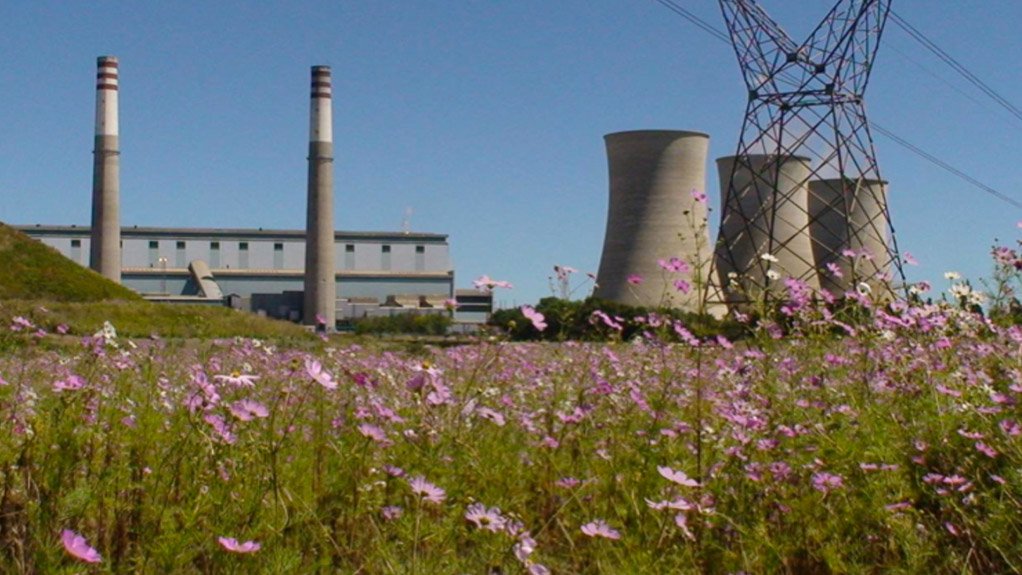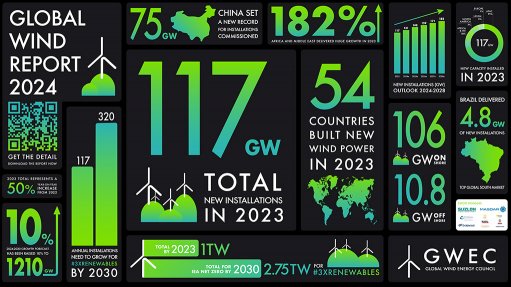Eskom brings mothballed stations back to life



U7 turbogen top view at Camden station
Photo by Eskom
Autumn at Grootvlei Station
Photo by Eskom
The Eskom Holdings’ Board of Directors took a decision in 2004 to return three power stations, Camden, Grootvlei, and Komati, which had been mothballed in the late 1980s and early 1990s, due to the declining reserve margin and the prohibition on constructing new generating capacity. The recommissioning was a first of its kind in the world and an incredible success story, led by Eskom. The three stations are fully online, supplying reliably to the national grid.
There was a need to return the stations to service since the Integrated Strategic Electricity Plan (ISEP) showed a spike in the country’s electricity demand, urgently requiring more generating capacity. The time taken to return the first units of the mothballed stations was quicker than building new coal-fired power stations. It was discovered that the levelised life cycle cost of returning the mothballed stations would be less than the alternative of running open-cycle gas turbines (OCGTs) and the cost of not serving energy.
The scope of work for the refurbishment of old, mothballed power stations in Eskom’s case varied for the three stations, but essentially entailed the inspection of the whole power station and the evaluation of the state of the plant and infrastructure against operational and engineering requirements and specifications. It must be understood that much has changed since these coal-fired power stations were put into service between 1960 and the late 1970s.
Thus, apart from design and construction to meet stricter environmental legal requirements, boiler and turbine plant had to be refurbished, and in some cases equipment beyond repair had to be replaced. The upgrading of control and measurement systems required the redesign of plant, and in general, electrical switchgear, instrumentation, and cabling had to be replaced.
Camden
Camden Power Station is situated near the town of Ermelo in Mpumalanga. In the quest to obtain more generating capacity, Eskom considered additional megawatts from Camden, first because of the low cost of refurbishment. The project commenced in 2004 and was completed in September 2008. The eight 200 MW units were refurbished and synchronised on to the system and are still running at very high load factors. Eight units were commissioned by 2008 in Camden, this project delivered the last of eight units only 122 days behind schedule.
The local municipality benefited from the project, as approximately 34% of the project costs were spent locally. All unskilled and semi-skilled staff were recruited locally. Eskom ensured that there were zero fatalities during the project execution.
Grootvlei
Grootvlei Power Station is situated near Balfour in the Mpumalanga province. The station was built in the late 1960s. There are five 200 MW units and one 190 MW unit. The units were decommissioned between 1989 and 1990 and had been stored in mothballed condition since then. Construction Management was mandated with the execution of the return to service of Grootvlei Power Station. The station has a capacity to supply peak power of 1 130 MW to the system, with an availability of greater than 90% during the winter months.
Construction work commenced in February 2005, and the last unit was completed in April 2013. All units were in commercial operation by July 2011, but the Unit 5 load was restricted to 160 MW due to boiler tube failures on superheaters 3 and 4. Due to high electricity demand, it was decided to run the unit at 160 MW until an outage could be declared to replace superheaters 3 and 4. The unit was re-optimised to full capacity and reclassified to 190 MW in April 2013 after replacement of the superheaters early this year.
Komati
Komati Power Station is situated next to the R35 between Middelburg and Bethal in Mpumalanga. The power station has an installed capacity of 1 000 MW generated by four 125 MW units and five 100 MW units. The last unit was refurbished and handed over to Generation for commercial operation on 1 October 2013, finally adding 1 000 MW to the national grid.
The business case timeline for Komati was two units every year from 2010 to 2013 and the final unit in 2014. The urgency of getting the system up and running also had the effect that the Komati timeline was shortened by 14 months by top management. Construction at Komati started in 2005, with the stripping of asbestos. Actual construction started in 2006.
Komati RTS was a particularly difficult project to tackle due to the mixture of original equipment manufacturers (OEMs), which resulted in the fragmentation of contracts and complicated interfacing. There are four different turbine designs, with two different OEMs; the boilers also have four different designs, from two different OEMs, one of which no longer exists. The boilers have two different pulverised mill designs and two different OEMs, one of which no longer exists. Six out of the nine generators were refurbished and are hydrogen-cooled; three were beyond recovery and were replaced with modern air-cooled generators. The project was completed using 262 separate contracts, with a peak staffing of 3 237 people on site.
Komati project cultivated zero tolerance towards non-compliance in terms of safety, which also gained the full cooperation of the contractors, who completed the project with zero LTIR and over seven million hours since the last lost-time injury.
Comments
Press Office
Announcements
What's On
Subscribe to improve your user experience...
Option 1 (equivalent of R125 a month):
Receive a weekly copy of Creamer Media's Engineering News & Mining Weekly magazine
(print copy for those in South Africa and e-magazine for those outside of South Africa)
Receive daily email newsletters
Access to full search results
Access archive of magazine back copies
Access to Projects in Progress
Access to ONE Research Report of your choice in PDF format
Option 2 (equivalent of R375 a month):
All benefits from Option 1
PLUS
Access to Creamer Media's Research Channel Africa for ALL Research Reports, in PDF format, on various industrial and mining sectors
including Electricity; Water; Energy Transition; Hydrogen; Roads, Rail and Ports; Coal; Gold; Platinum; Battery Metals; etc.
Already a subscriber?
Forgotten your password?
Receive weekly copy of Creamer Media's Engineering News & Mining Weekly magazine (print copy for those in South Africa and e-magazine for those outside of South Africa)
➕
Recieve daily email newsletters
➕
Access to full search results
➕
Access archive of magazine back copies
➕
Access to Projects in Progress
➕
Access to ONE Research Report of your choice in PDF format
RESEARCH CHANNEL AFRICA
R4500 (equivalent of R375 a month)
SUBSCRIBEAll benefits from Option 1
➕
Access to Creamer Media's Research Channel Africa for ALL Research Reports on various industrial and mining sectors, in PDF format, including on:
Electricity
➕
Water
➕
Energy Transition
➕
Hydrogen
➕
Roads, Rail and Ports
➕
Coal
➕
Gold
➕
Platinum
➕
Battery Metals
➕
etc.
Receive all benefits from Option 1 or Option 2 delivered to numerous people at your company
➕
Multiple User names and Passwords for simultaneous log-ins
➕
Intranet integration access to all in your organisation




















